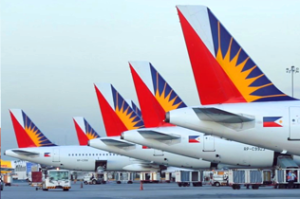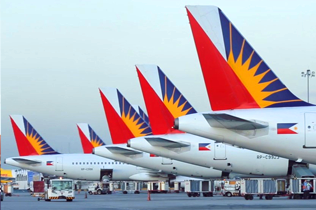
Philippine Airlines (PAL) expects a US$1-billion revenue loss from February 2020 until the end of the quarantine period.
“We can’t wait to fly again so we’re eagerly awaiting the end of the lockdown,” PAL president and chief operating officer Gilbert Santa Maria said in an interview with a broadcasting network on May 21.
PAL’s domestic and international flights are suspended until May 31 due to travel restrictions resulting from implementation of varying levels of community quarantine to contain spread of COVID-19 in the country.
For now PAL only operates cargo and repatriation flights.
The government first placed Luzon, including the National Capital Region, under enhanced community quarantine on March 17. NCR, Laguna and a few other areas have recently transitioned to the less strict modified enhanced community quarantine, expected to last until May 31.
Asked if PAL, after recording a wider net loss in 2019, is on the brink of bankruptcy, Santa Maria replied: “All airlines are at the brink of bankruptcy because of COVID-19.”
READ: PAL, sister firms losses widen to P10.2 billion in 2019
But he added, “We are not in immediate danger of bankruptcy but as this crisis continues, for every month the crisis has passed, we’ve lost about $300 million in revenue.”
Including losses for February and March this year, PAL expects close to $1 billion or roughly P50 billion in revenue losses once quarantine restrictions in the country are lifted.
He said PAL chairman Lucio Tan, Sr.’s injection of about half of the $600-million equity infusion approved by PAL’s Board in October last year has helped keep operations going.
“Without that liquidity, Philippine Airlines would probably not be here anymore,” Santa Maria said.
Of the $300 million injection, over $200 million was placed before end of last year and $100 million at the start of the COVID-19 crisis, Santa Maria said.
PAL and its sister firms reported a consolidated comprehensive loss of P10.20 billion in 2019 from the P2.84-billion loss in 2018.
More layoffs?
On whether the airline plans to lay off more personnel after letting go of 300 last February, the PAL chief said, “At this point in time, it will be extremely inhuman of us to drop our employees on the streets while a pandemic is raging.”
If the recovery is rapid then it may retain more employees, he said. But he noted the reality is that demand won’t return until two to three years from now so PAL will have an excess of employees.
“I’ve told employees, nobody has any job guarantees. The only people who can guarantee our positions is the Filipino passenger who continues to be willing to fly Philippine Airlines,” Santa Maria said.
“As soon as we see the recovery, we’ll start assessing what our needs are going to be,” he said.
“For example, if we find out that we are going to need to return say 10 to 20% of our aircraft because demand just isn’t there – so we don’t have to pay rent, we’ll return the aircraft – well that means we’re going to have to reduce our flight crews and our cabin crews by similar amount because we will have fewer aircraft.”
As directed by the Department of Transportation, Santa Maria said airlines are already planning flights between areas under general community quarantine, which allows public transportation.
He said PAL will operate 5% to 10% of its domestic flights in June and July and resume 20% to 30% of its international flight operations. Flights “will slowly ramp up as demand picks up,” he added.
In an earlier advisory, the airline said it is working on plans to operate a few domestic routes from its Davao hub, possibly to Iloilo, Siargao and General Santos, to help support the economic recovery of Mindanao with the easing of quarantine restrictions there.
For international flights, Santa Maria said PAL will first resume its transpacific routes to Vancouver, Los Angeles, and San Francisco, as “demand is still pretty high” with American citizens going back to these areas.
PAL also plans to resume regional routes such as in Singapore and Japan where there are stranded Filipinos and for those who need to fly for business.
Emergency credit
Santa Maria, meanwhile, clarified that the Air Carriers Association of the Philippines (ACAP)—of which PAL is a member together with AirAsia Philippines, Cebu Pacific, Cebgo, and PAL Express—is not requesting for government subsidy but for emergency credit lines “to allow us to find liquidity again once the revenue returns.” Santa Maria stressed airlines are currently not earning any revenue.
ACAP vice chairman Roberto Lim, in a Senate Committee on Public Services hearing on May 11, said an P8.6 billion monthly government subsidy would be needed to maintain the employment pool of the aviation sector while airlines are not generating revenues during the quarantine period.
Their proposal to Congress includes P1.3 billion per month for wage subsidy; P500 million per month for payment to aviation authorities for navigational charges, landing and takeoff fees, among others; and P6.8 billion a month for working capital.





